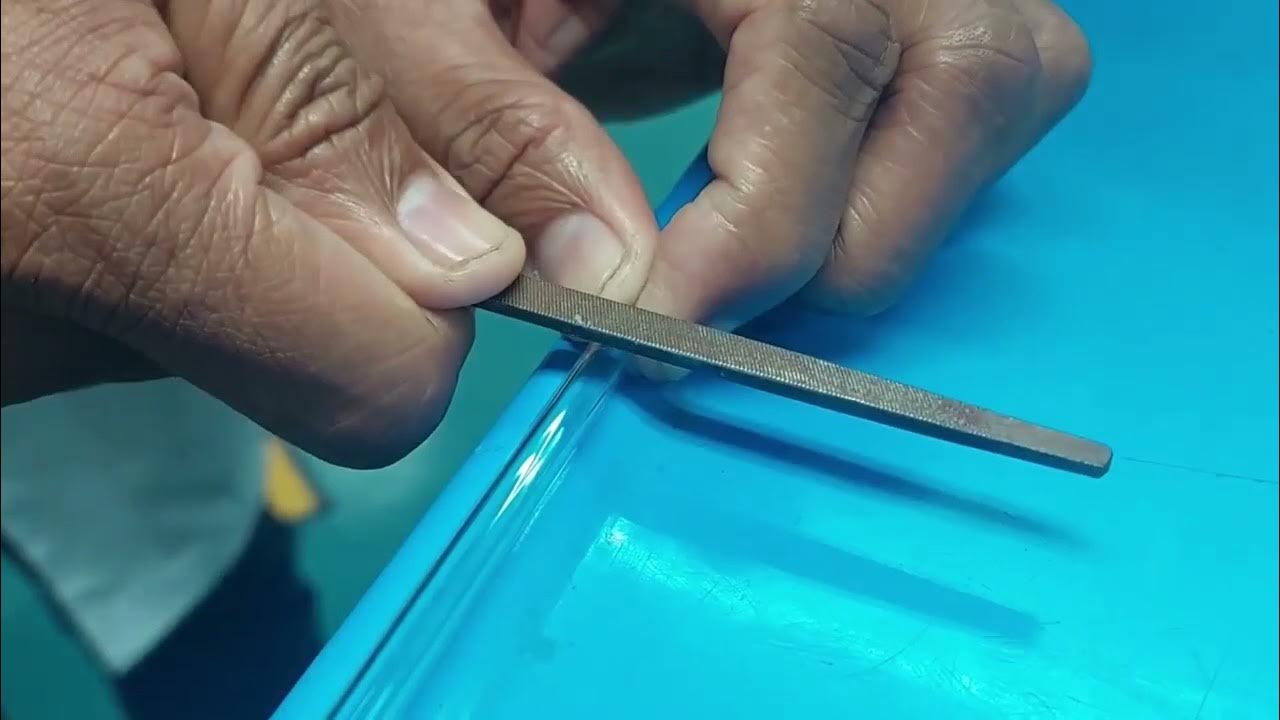KALO MAU JADI TUKANG CUKUR HARUS TAU TEKNIK INI❗️full teknik pengguntingan❗️
Summary
TLDRIn this tutorial, Andre Bohel 98 provides a comprehensive guide to basic long hair cutting techniques, focusing on creating a square cut that transitions into a triangular shape. The video covers essential head zones and sections, demonstrating the correct methods for parting, clipping, and cutting. Andre explains key terminology like 'Apex,' 'Crown,' and 'Occipital,' while showcasing step-by-step instructions for ensuring an even and balanced haircut. The tutorial also includes tips for precision cutting and achieving a natural, textured finish.
Takeaways
- 😀 The video provides a tutorial on basic hair cutting techniques for long hair, focusing on understanding foundational techniques before progressing to more complex styles.
- 😀 The instructor emphasizes the importance of knowing the anatomy of the head (e.g., areas like crown, occipital, and temporal) to guide the haircutting process.
- 😀 Parting the hair is a key step in preparation, where the hair is separated into sections to manage and control the cutting process effectively.
- 😀 The 'box section' technique is introduced, which involves dividing the hair into a box-shaped form to ensure symmetry in the haircut.
- 😀 Square cuts are suggested as the starting point for long haircuts, creating a foundation for a triangular shape once the hair naturally falls due to its length and head structure.
- 😀 Using numerical measurement techniques (e.g., from 2 to 3, 3 to 4) helps guide the cutting process for consistency in length across sections.
- 😀 The process includes adjusting tension and pulling the hair appropriately to maintain the shape and avoid unwanted changes in the cut.
- 😀 Attention to specific areas like the crown and occipital is crucial in shaping the final look, ensuring the cut flows naturally with the head's contours.
- 😀 Cross-checking the cut horizontally is recommended to ensure evenness and to avoid leaving uneven sections, especially in the back and side areas.
- 😀 After cutting, the hair is dried and styled, with emphasis on creating a natural, triangular shape by reducing weight and texture using scissors for a more refined look.
Q & A
What is the first step when starting a haircut in this tutorial?
-The first step is to create a square cut, which serves as the foundation for the haircut. This is done by cutting the hair straight and even.
What does the square cut transition into after being made?
-After the square cut is made, it naturally transitions into a triangular shape, with the hair becoming longer at the nape of the neck and shorter at the top.
What are the key zones mentioned for cutting long hair?
-The key zones for cutting long hair include the temporal, frontal, apex, crown, occipital, and nape areas of the head.
What is the purpose of parting the hair during the cutting process?
-Parting the hair helps separate sections to ensure the cutting process is organized, with clear divisions between the hair that has been cut and the hair that still needs to be cut.
How should you position the comb while parting the hair?
-When parting the hair, you should use a comb to create a straight line, guiding it across the head from the front to the back, ensuring the sections are even.
Why is the occipital area significant in this haircut technique?
-The occipital area is important because it marks the highest boundary when using clippers. It helps in determining where to start and how to shape the back of the head.
How do you ensure the haircut is symmetrical during the process?
-To ensure symmetry, the hair is sectioned into equal parts, and each side is cut in the same manner. Consistency in sectioning and cutting angles is crucial.
What does 'BX section' refer to in the tutorial?
-The 'BX section' refers to a section of the hair that is created by parting the hair to divide the front and back areas of the head for easier cutting.
What cutting technique is used for the crown area?
-For the crown area, the technique involves creating a square shape, and a 45-degree angle is often used for creating graduation, adding weight and structure to the cut.
How do you check if the haircut is balanced after cutting?
-After cutting, you check the balance by pulling the hair horizontally and observing whether it is even. If there are discrepancies, adjustments are made to ensure both sides are aligned.
Outlines

This section is available to paid users only. Please upgrade to access this part.
Upgrade NowMindmap

This section is available to paid users only. Please upgrade to access this part.
Upgrade NowKeywords

This section is available to paid users only. Please upgrade to access this part.
Upgrade NowHighlights

This section is available to paid users only. Please upgrade to access this part.
Upgrade NowTranscripts

This section is available to paid users only. Please upgrade to access this part.
Upgrade NowBrowse More Related Video

Power Point Pemangkasan Rambut Teknik Dasar

CORTE BÁSICO MUITO FÁCIL | CORTE PARA DA PESO E VOLUME NO CABELO + DICAS - COMO CORTAR UM CABELO?

How to Choose the Best Haircut for Your Face Shape | GQ

Corte Degradado Bob RAUL ROA ESTILISTA

BASIC SCIENCE LABORATORY TECHNIQUES: Glass Manipulation

KELAS CUKUR #1 - MATERI PERTAMA PENGENALAN ALAT CUKUR
5.0 / 5 (0 votes)